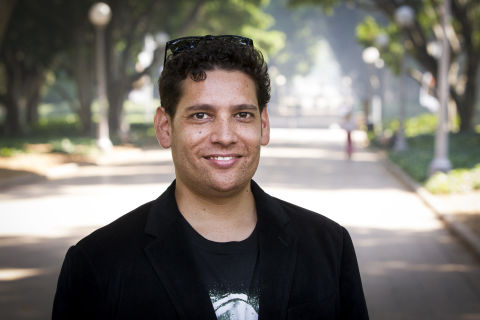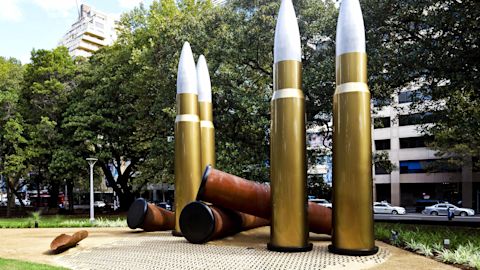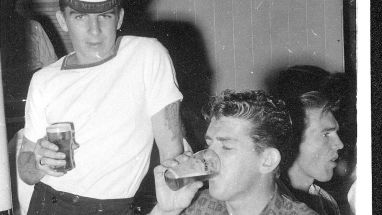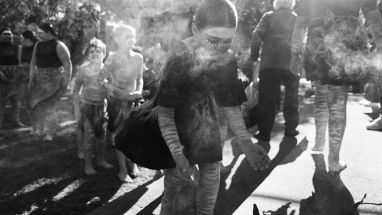Aboriginal artist Tony Albert whose family has over 80-years of combined military service has created a public artwork in Hyde Park to honour the sacrifices and bravery of Aboriginal and Torres Strait Islander service men and women.
Tony’s dramatic sculpture work is inspired by his grandfather’s story about himself and 6 soldiers who escaped from a prisoner of war camp in Germany, only to be caught by Italian soldiers who lined them up to be executed.
The Italians shot 3 of the men before realising their mistake – the men were POWs and should have been returned to Germany. Tony’s artwork is a reminder of how his grandfather and fellow service people were treated differently to their white comrades after the war.
“When service men and women returned to Australia, they were given land for their service. However, not only was Eddie and his fellow Aboriginal soldiers not given any land, their land was still being taken away.
“Eddie and fellow Aboriginal and Torres Strait Islander men and women defended our country, they were prepared to fall but upon returning to our country, they were left to fall again – ‘yininmadyemi,’ thou didst let fall,” Tony said.
Embedded content: https://youtu.be/j88uDFAxF1g
YININMADYEMI Thou didst let fall is located in Hyde Park south due to the site’s historical significance. The area was once a ritual contest ground, a crossroads for traditional walking trails, and an important site for ceremony, gathering and camping. It is also home to the Anzac Memorial.
The artwork is composed of 4 standing bullets at 7-metres tall, to represent those who survived and 3 fallen shells in remembrance of those who made the ultimate sacrifice. Author and Wiradjuri woman Anita Heiss worked with Tony to write inscriptions honouring Aboriginal and Torres Strait Islander servicemen and women. These were engraved on the bullets.
Aboriginal and Torres Strait Islander peoples have served Australia in the military from before the Boer War to the present, but it may never be known how many officially served as ethnic origin was never required to be documented.

The artwork was selected by a panel made up of representatives from the City’s Aboriginal and Torres Strait Islander and Design Advisory panels, the Eora Journey Public Art Working Group, the Art Gallery of NSW and the Australian War Memorial. The selection followed a competitive and open submission process that attracted proposals from 14 Aboriginal and Torres Strait Islander artists, which were evaluated by the panel.
YININMADYEMI Thou didst let fall is 1 of 7 public artworks commissioned as part of the City of Sydney’s Eora Journey program, curated by Hetti Perkins. It was developed with help from family historian Trisha Albert, author of Unsung Heroes. The author was also guided by the Babana Aboriginal Men’s Group Coloured Diggers project.
Tony’s family are Girrimay, Yidinji and Kuku Yalandji, from Far North Queensland. His grandfather Eddie served in the Australian Army in World War II.
“I feel the most powerful artworks relating to war are those that use bold and evocative images to stir strong emotions in visitors,” Tony said.
Remembering those who served
The free Sydney Culture Walks app will guide you to the city’s war memorials, including YININMADYEMI Thou didst let fall.
More stories can be discovered online. The City's History Unit has put together a series of oral history interviews with Aboriginal and Torres Strait Islander service people and their families. Their stories illuminate an inadequately documented aspect of Australia’s service history.
Published 25 May 2015, updated 24 November 2023



